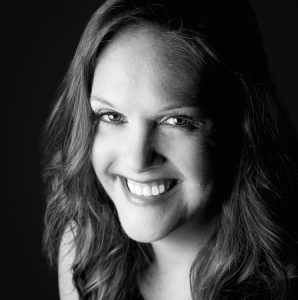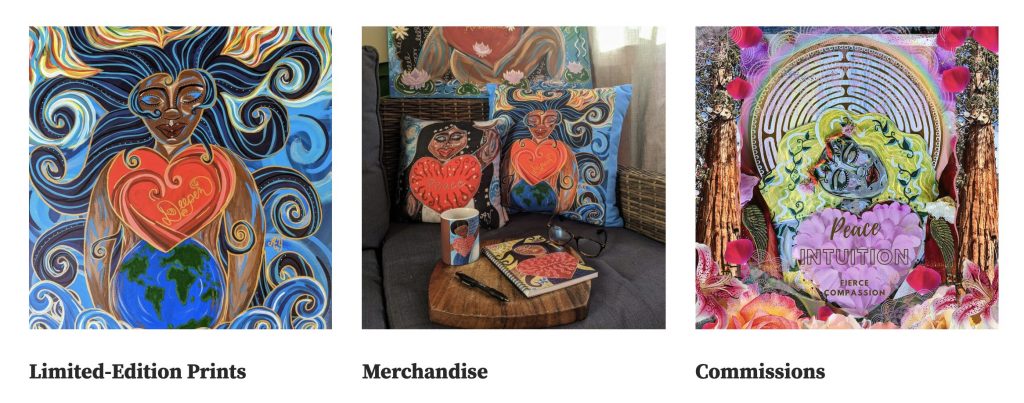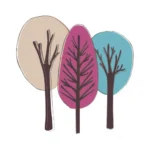What brick walls have you come up against in your ministry?
Quite a few come to mind. Some of those walls are of our own making. In an effort to protect ourselves we build walls. Walls of self-reliance. Defenses that block out the past, shield us from intense emotion. Walls we think will guard our hearts against vulnerability and keep us from harm.
Some of these internal walls are the psychological and emotional legacy our parents and grandparents and ancestors before memory. They were built as defenses against fears, loss, grief, trauma, threats, and dangers.
Then strangely, just when we need to make connection beyond ourselves, the walls we built and the ones we inherited become barriers to the very people, and vocations, and lives we need and love.
Other brick walls are so much older than we are. They are so much more durable than any psychological invention we could muster. Sociocultural walls that were built and reinforced generation after generation. Walls that keep people apart, reinforce political boundaries, define whole nations and states and people groups. Walls designed to define humans by gender or class or race, nationality or language or ethnicity. These walls are built on the bricks of fiction. Yet they are as strong and durable, as lasting and formidable as any fortress, great wall, castle, or prison.
Brick Walls
This week we hear from author, artist, teacher, and minister Rev. Dr. Angela Yarber. She has some marvelous insights about what we do with the brick walls we encounter. Her book, co-authored with Dr. Cody Sanders, Microaggressions in Ministry, is featured in chapter 19 of Pastoral imagination, Bringing the Practice of Ministry to Life.
In this week’s video I share a story about Teresa. She lived much of her life with privilege that gave her access to doors in and through the walls. Then some changes in her life put her up against some new (to her) brick walls of injustice. She found herself banging her head into them. Yet with pastoral imagination, she found a way to stop banging her head against that particular brick wall.
Have you checked out the new Closed Captioning on our videos? Just click on that [CC] on the toolbar and read along as you watch.
See more about Brick Walls | video | blog | podcast
Learning in practice with Angela Yarber
 Rev. Dr. Angela Yarber, Author, Artist, and Executive Director, Tehom Center, is our guest this week!
Rev. Dr. Angela Yarber, Author, Artist, and Executive Director, Tehom Center, is our guest this week!
At her web home, Dr. Yarber describes the theology that inspires the center. “Tehom is the Hebrew word for deep or watery depths. At the Tehom Center, the focus is on justice, creativity, spirituality, and recovering and embracing the feminist, queer roots of the Judeo-Christian traditions. Dr. Yarber is an award-winning author of seven books, including four listed in the Top LGBTQ Religion Books.
Angela Yarber is probably best known for her feminist folk art. I urge you to go to her site and explore its beauty. If you are facing a brick wall in your life, the very least you can do is hang some feminist art on it!

What questions do you live by?
AY: How can I create pathways to enliven beauty for more marginalized women? Who is excluded? Where is awe and wonder? How can we create a more just world?
This first question sums up the essence of much of my calling. Empowering marginalized women by teaching about revolutionary women through art, writing, retreats, and academic courses is the mission of my non-profit, the Tehom Center, and the aim of my work as an author and working artist. I believe that all people deserve equal access to wonder, and the beauty that creates such awe. Lifting up the oft untold stories of revolutionary women from history and mythology is one pivotal way to offer a corrective, to lessen exclusion, and to combat the white supremacist cisheteropatriarchy that otherwise damns, excludes, and marginalizes too many.
For me, this is why the majority of the women, goddesses, and archetypes I paint, research, write and teach about are WOC and/or queer. Creating pathways to enlivening beauty for more marginalized women means shining an excavating light on our lives, legends, and legacies.
What questions do you wrestle with – in life or in your practice of ministry?
AY: How can we dismantle systems of oppression while simultaneously caring for ourselves? And how can I find balance amid myriad callings, joys, and gifts?
This latter question is deeply personal. I’ve always been a person interested in a lot of different things, so narrowing my focus to one vocation, one field, one job has never been my strong suit. Plus, I don’t want to narrow my focus, but to celebrate an intersectional calling unconstrained by limiting constructs. Afterall, why can’t I be a professor, artist, author, and activist simultaneously? For over a decade, I was a professional dancer, while also serving as a pastor and teaching as a professor. For me, these parts of my life were inextricably linked. Now, I have the great privilege of housing my teaching, art, writing, and activism in my intersectionally feminist and queer non-profit where each element of my calling informs the other. Is it hard to find balance as I juggle these myriad callings? Yes. Do I sometimes struggle to know where to focus my time and energies? Yes. Is it worth it, though? Absolutely.
How have you experienced a “brick wall” and what was it like moving through that experience?
AY: I’ve experienced several different brick walls. I grew up in a working poor home where no one had the privilege of finishing high school, let alone attending college. So, I earned a BA, MDiv, and PhD on behalf of my family members who didn’t have the access I did. Poverty is a brick wall.
I’m a queer woman who has left toxic ministry settings, received hate mail and even death threats, and experienced discrimination in hiring. Marginality is a brick wall.
Addiction has killed, incarcerated, and violated many family members; this addiction runs through my veins. Addiction is a brick wall.
Recently, I fought insurance for access to full-time Eating Disorder Treatment after a 25-year battle with eating disorders. The above brick walls prevented my access to treatment at the nadir of my anorexia and bulimia 20-25 years ago. Over the past few years, my eating disorder emerged in new and challenging ways. Only this time, I had years of practice empowering women, engaging my assertive voice, and the knowledge of how to combat the brick walls designed to disenfranchise women like me. So, I did. As I write this, I’ve been home from treatment for a little over a week.
Part of being a woman in ministry is itself a brick wall. The wall becomes thicker and higher when one is also queer, a woman of color, or anyone experiencing intersecting marginalities. And the brick wall is also supported by structures systematically designed to make dismantling the wall more challenging, while simultaneously making us feel like we’re not working hard enough. On this I call complete BS! In fact, my wife and I have described the method for dismantling such walls with the analogy of a power saw. Stick with me.
Three Problems…
If a power saw isn’t working, there’s usually one of three problems: 1. The blade is too dull and needs sharpening or replacing, 2. The battery is dead and needs charging, or 3. The power outlet is faulty and incapable of fully charging the battery. So it is when marginalized women are confronted with brick walls. We feel like our “blades” are too dull, so we sharpen ourselves with personal development, hard work, meditation, prayer, exercise, behavioral changes, and all those things women are told to work on in order to better climb the walls in front of us. Or we come face to face with the wall and realize we’re just too exhausted to climb it because our batteries are dead. We need to recharge with self-care, so we’re told to take bubble baths, go to a spa, or paint our toenails.
Too often, women scrambling up brick walls are told they could summit the challenge if only they blade sharpen (personal development and behavioral changes) or recharge (self-care). So, we meditate, take those extra classes, go to the gym, read self-help, fill copious bubble baths, and buy facemasks. Yet we still find ourselves unable to crash through the blasted brick wall. And that’s because we aren’t doing the third important element of dismantling. We haven’t checked the power outlet. And let me tell you, subversive sister saints, all those outlets are faulty because those power structures have been systematically designed to make us fail. It’s like filling your bubble bath with itching powder.
We need blade sharpening—personal development—to address brick walls. We need to recharge—self-care—to address the brick walls. But these only work if we’re simultaneously addressing those faulty power outlets. Until I recognized the faulty power outlets that were shorting my systems of self-worth, upward mobility, and affirmation, those brick walls wouldn’t budge. Now, however, I have a power saw in hand and rubble at my feet. Surrounding me are the revolutionary women adept at wall smashing, and together, we’re ready to do some dismantling.
How has your practice of ministry changed over time?
For fourteen years, I faithfully served the church as a pastor. Much of that time, I was also a professional dancer, an out lesbian, working artist, part-time professor, and a published author. But the church became too toxic for me, congregational microaggressions whittled away at my ministry, psyche, and soul. In 2013, I left the church. And I’ve never felt so free. After 18 months of full-time travel discernment with my wife and toddler, I realized I could create my own call, curating a life where art, writing, teaching, and activism are my ministry. So, I gathered over 120 folk-feminist iconography paintings of revolutionary women, seven published books, myriad academic courses and retreats, and formed them into the Tehom Center non-profit in 2017. Sometimes, I’m overwhelmed with how fortunate I am to call this work my profession, my job, because I get to do what I absolutely love every day.
The shift is also challenging. The lack of financial security or “vocational network” can sometimes feel overwhelming. And I’m working with a literary agent to transition from academic to commercial publishing to find the best publisher for my most recent book, Emboldened: Revolutionary Women, Radical Imagination, and the Queering of the American Dream. Writing, art, teaching, and public speaking are my practice of ministry. These are dreams come true, but not without hard work and a healthy dose of radical imagination.
What is on your must-read list right now?
White Feminism by Koa Beck, partnered with Hood Feminism by Mikki Kendall, are profound resources for white women seeking to become better anti-racist advocates. Anti-Diet by Christy Harrison is a must-read for anyone abiding by Health At Every Size and endeavoring to dismantle the diet culture that wreaks havoc on women’s bodies. And Nikita Gill’s poetry, especially in Great Goddesses, is always an empowering balm.




